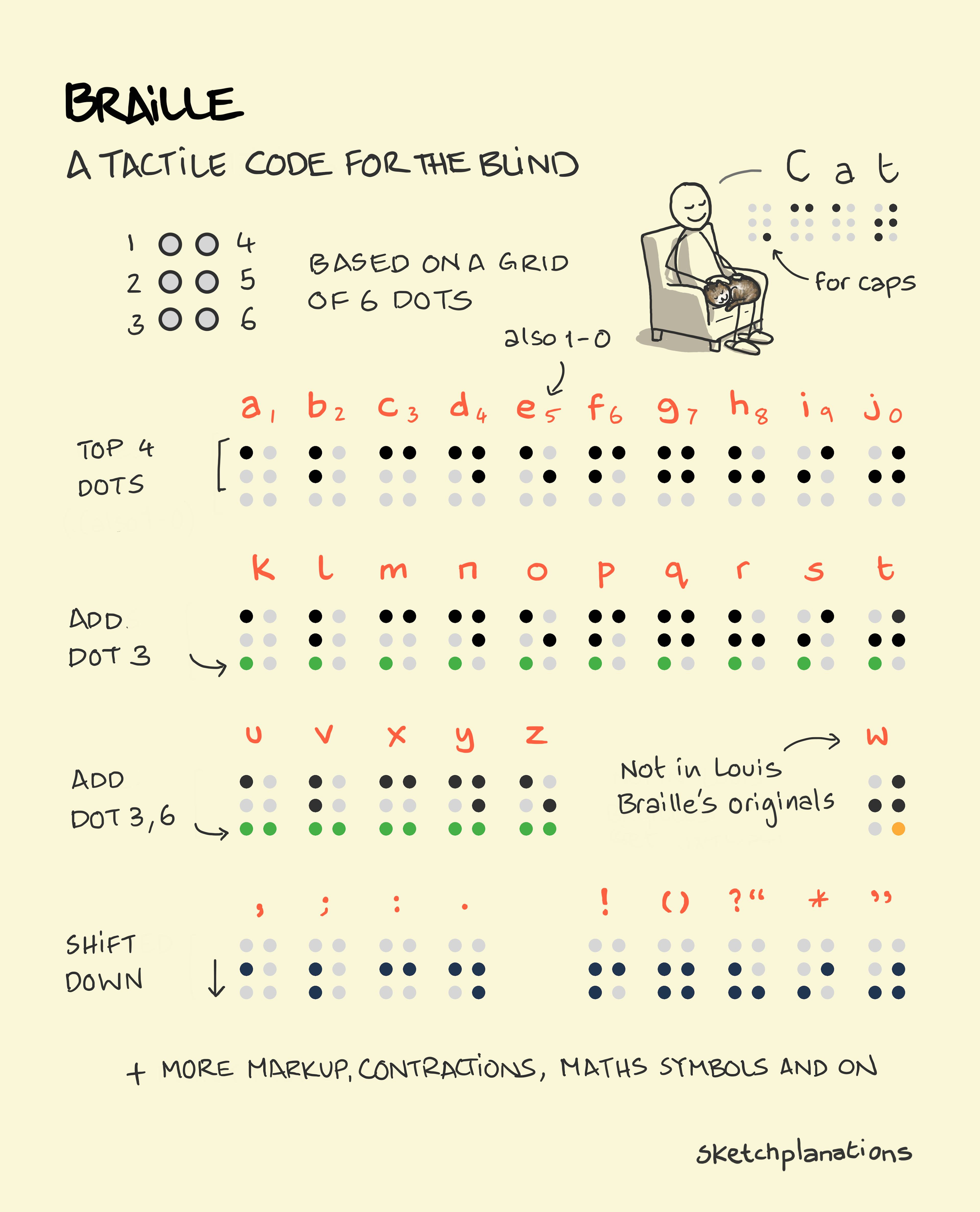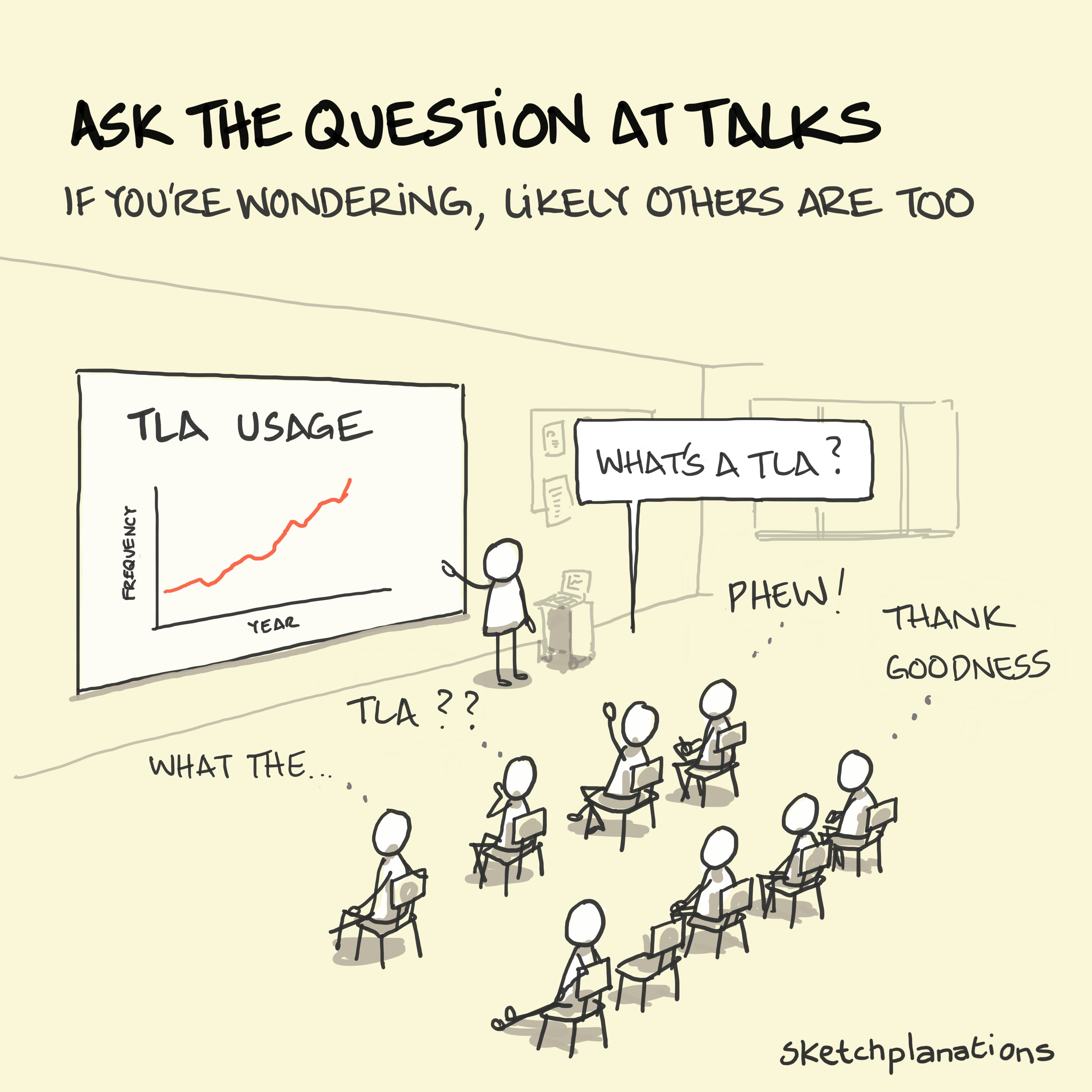Get my new weekly sketch in your inbox
Join over 30,000 people learning something new in a moment each Sunday.

Braille
Braille is a tactile writing and reading system for the blind and visually impaired. It was invented by Louis Braille when just 15 in 1824. Respect! I don't know about you, but when I've tried braille on signs occasionally, it's always seemed difficult to train my fingers to differentiate the shapes and the dots. Perhaps it would have helped if I'd known how it worked.
Braille is based on a pattern of 6 dots, like a 6 on dice, with different letters, numerals, or sounds being different combinations. It doesn't match the shapes of written letters though, instead breaking the alphabet up into groups of 10. The first 10 letters are combinations of the top 4 dots. The following 10 letters repeat the combinations and add dot 3 in the bottom-left. Then the remaining letters, except w start again adding with dot 6 added. W wasn't in Louis Braille's original French alphabet so appears tacked on at the end.
Since its invention, it's gone through multiple iterations and languages, and there are combinations for punctuation (some common ones formed by shifting down the original 10 combinations), numbers, accented letters, maths symbols, and more. There is also agreed-upon shorthand where a letter may mean a common word eg l for like, and there are contractions where a symbol may mean a sound or set of letters like 'ch'.
The sketch shows the Latin alphabet for modern English braille.
You’re welcome to use and share this image and text for non-commercial purposes with attribution. Go wild!
See licence

